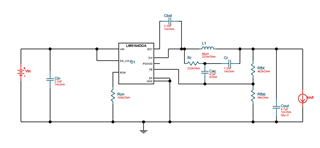Tool/software:
Hi,
I designed a DC/DC buck converter using the LM5164DDAR IC with the help of WEBENCH. My target input range is 15–72V, and the output is 12V/1A. I implemented the circuit exactly as provided by WEBENCH and verified it against the datasheet recommendations.
However, I am facing a critical issue: when the system is powered up (around 58V input), a burn or explosion occurs at the VIN and EN/UVLO pins of the IC.
Below, I have attached the schematic and photos of the damaged IC for your reference.
I would appreciate your support in identifying the cause of this issue.




